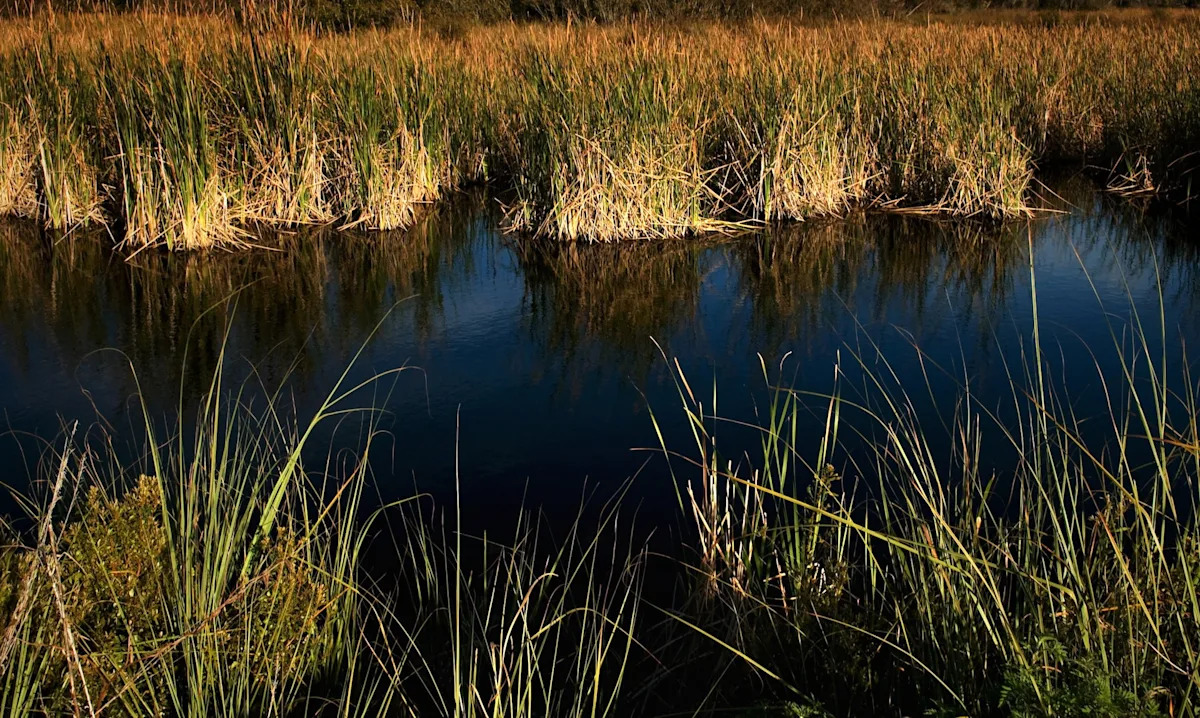Two invasive species of python in Florida have interbred to create a terrifying new hybrid snake that is even better adapted to the Everglades environment, a U.S. Geological Survey study found.
What’s happening?
First introduced to Florida via the commercial pet trade, Burmese pythons, which are native to Southeast Asia, have been breeding in the Florida wild since the 1980s, the study said.
Unfortunately, the giant constrictors have adapted remarkably well to the environment in South Florida, expanding rapidly in terms of population and geography since their introduction, per the USGS.
The snakes’ natural stealthiness, paired with the inaccessibility of the Everglades environment to humans, has made tracking and studying the snakes a challenge for researchers.
“Our ability to detect Burmese pythons in the Greater Everglades has been limited by their effective camouflage and secretive behavior,” said Kristen Hart, a study co-author, per the USGS. “By using genetic tools and techniques and continuing to monitor their movement patterns, we have been able to get a better understanding of their habitat preferences and resource use.”
These genetic tools revealed that the Burmese pythons were closely related, indicating they likely descended from relatively few ancestors that had either escaped or were released into the wild, the study found.
Watch now: One simple swap could save you $130 a year on your energy bills
The genetic testing also yielded another, unexpected result.
“The snakes in South Florida are physically identifiable as Burmese pythons, but genetically, there seems to be a different, more complicated story,” said Margaret Hunter, the study’s lead author, per the USGS.
Genetically, the giant constrictors were hybrids of Burmese pythons and Indian pythons. The new hybrid snakes appeared even better acclimated to existence in the Florida Everglades, something Hunter attributed to “hybrid vigor.”
Genetic mixing between closely related species “can lead to … the best traits of two species are passed into their offspring,” the geneticist explained. “Hybrid vigor can potentially lead to a better ability to adapt to environmental stressors and changes.
“In an invasive species population like the Burmese pythons in South Florida, this could result in a broader and more rapid distribution.”
The introduction of invasive pythons into the South Florida ecosystem has devastated the populations of small mammals on which the snakes prey. From 1997 to 2012, the USGS measured population declines of 99.3% for raccoons, 98.9% for opossums, and 87.5% for bobcats.
“The most severe decline in native species [have] occurred in the remote southernmost regions of the [Everglades National] Park where pythons have been established the longest,” the USGS said.
Why are invasive species important?
As the example of pythons in South Florida has illustrated, once an invasive species is introduced into a new environment, the consequences are highly unpredictable but often devastating.
Around the world, invasive species are the No. 2 reason why native species go extinct, behind only habitat loss, according to New Scientist.
Invasive species outcompete native plants and animals, spread deadly diseases, and disrupt delicate ecosystems. They also impact the food supply by decimating livestock and crops while also shutting down trade.
What’s being done about invasive species?
Rising global temperatures have increased the spread of invasive species, opening up new regions where certain species could not previously survive, per the USGS.
Consequently, in order to curb the spread of invasive species on a global scale, we need to reduce the amount of heat-trapping pollution that enters the atmosphere. You can reduce the pollution you and your family generate by driving an electric vehicle, installing solar panels, or taking public transit.
Additionally, you can give direct assistance to native species in your area by planting a native garden, upgrading to a natural lawn, or rewilding your yard, all of which provide additional shelter and food for local wildlife.
Join our free newsletter for good news and useful tips, and don’t miss this cool list of easy ways to help yourself while helping the planet.
